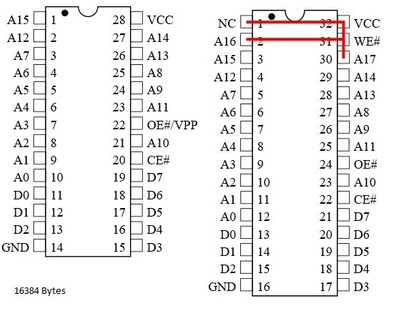First post, by Pickle
I have a couple of these cards and i plan to use one to boot off of compact flash on a 386SX.
I found the wiki page ( I think i was little too quick) and just ordered some AT28C64's which are 28 pin:
Boot ROM
This card's boot ROM socket takes a standard 32-pin EEPROM chip, as well as 28-pin EEPROM chips such as the 28C64. It has been tested extensively with the 28C64 chip flashed with XT-IDE BIOS images, both XT and AT versions. It is a reliable way to boot from a modern era hard drive connected to an XT or AT class system whose BIOS would not natively support it.
So im doubting if the socket just takes the 28 pin eeprom i have. Some pins are the same, but i have feeling i might need to create an adapter. I wish the statement went into a little more detail or had a link.
I dont want to plug them in until I figure it out.
I also wonder if it possible to write via the nic card. (I know about the eeprom writers)
Does anyone else have some experience with a setup like this and have any suggestions?
